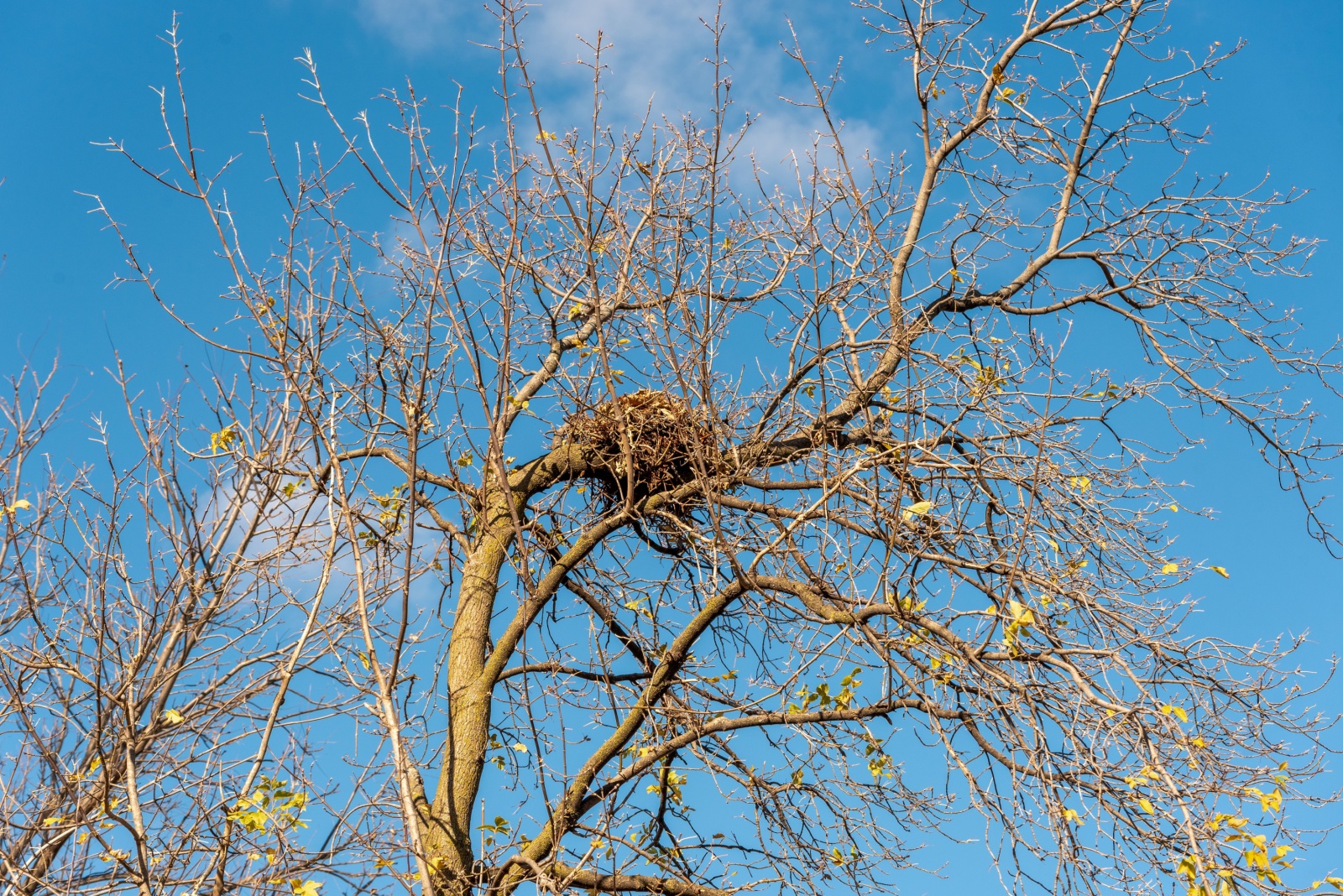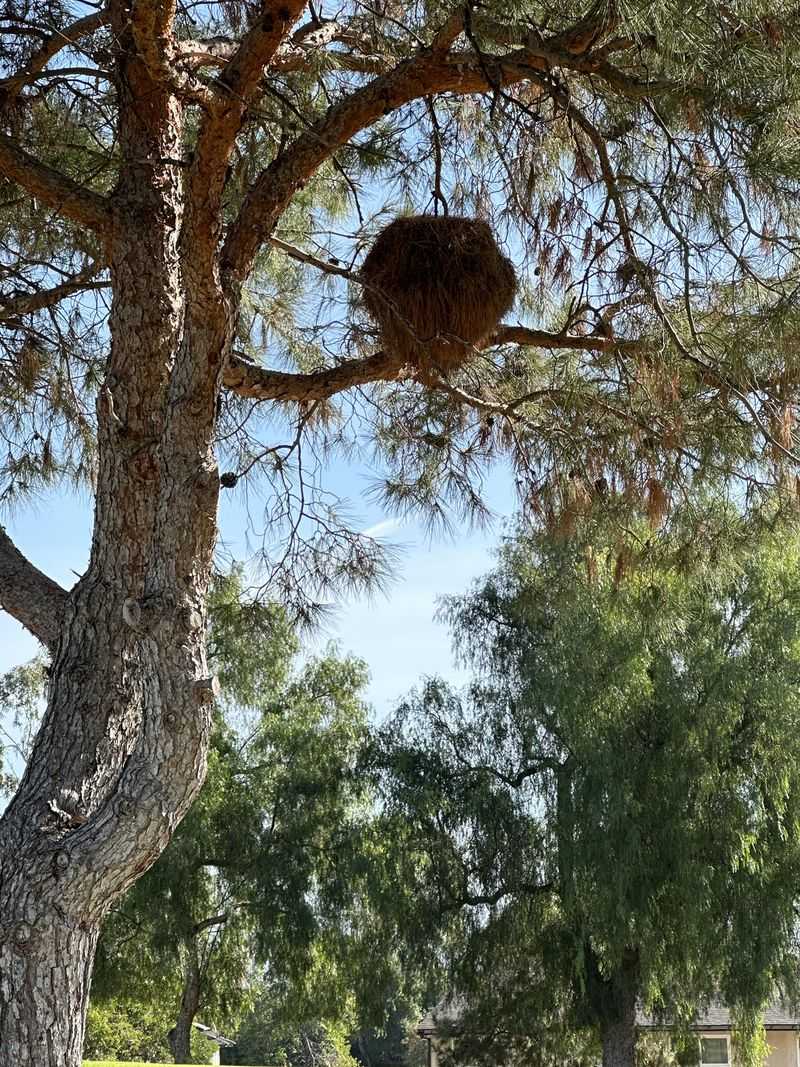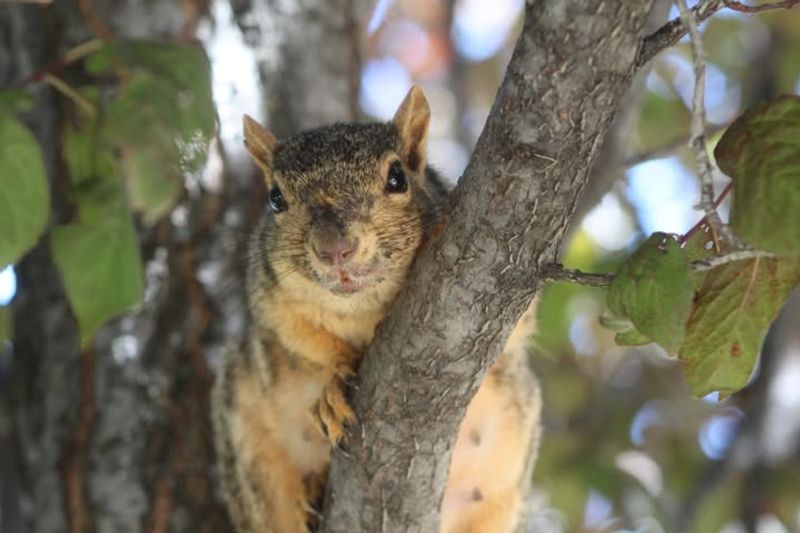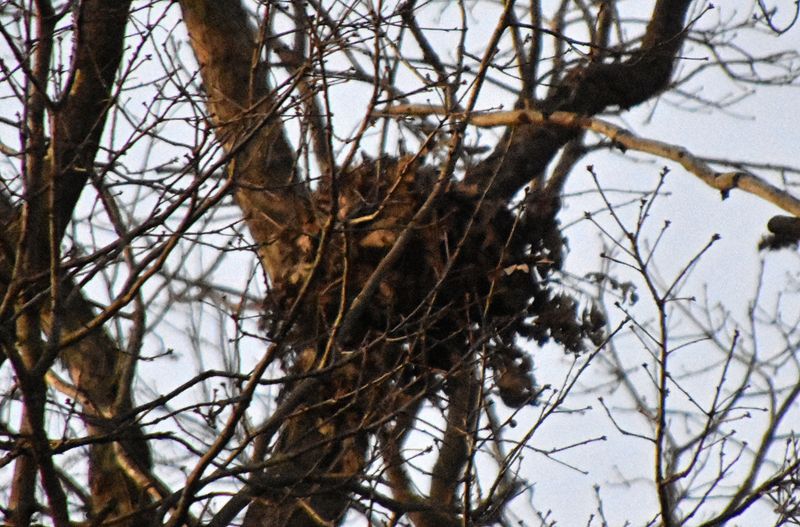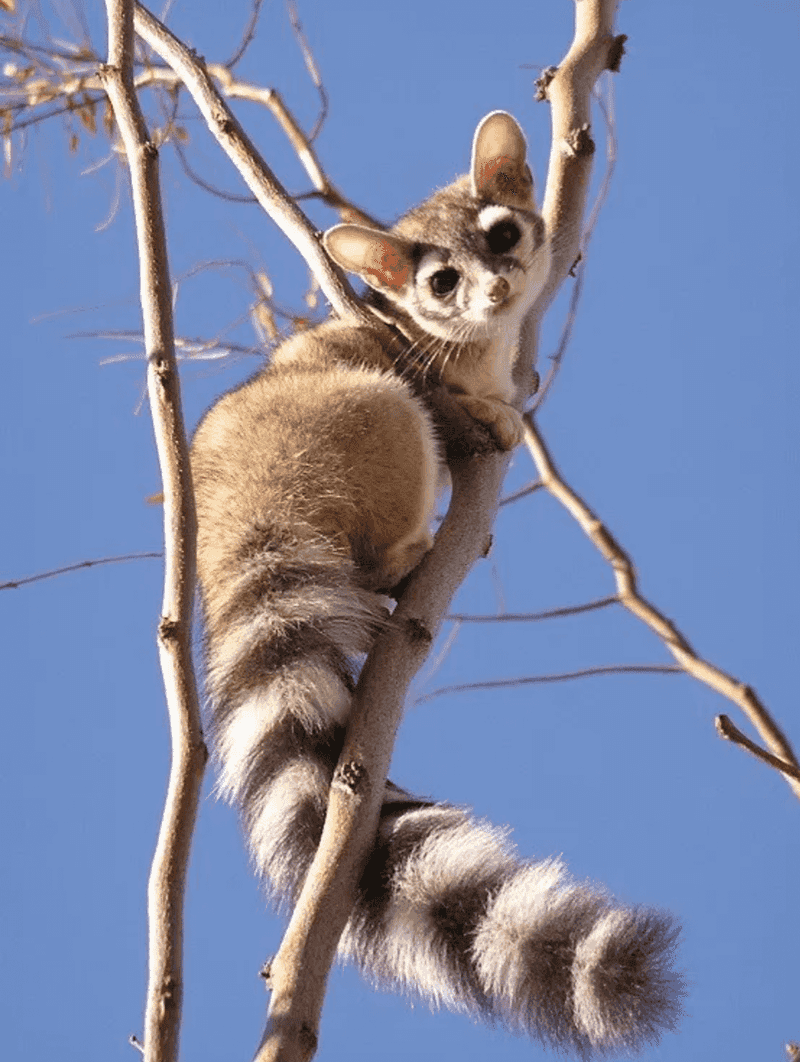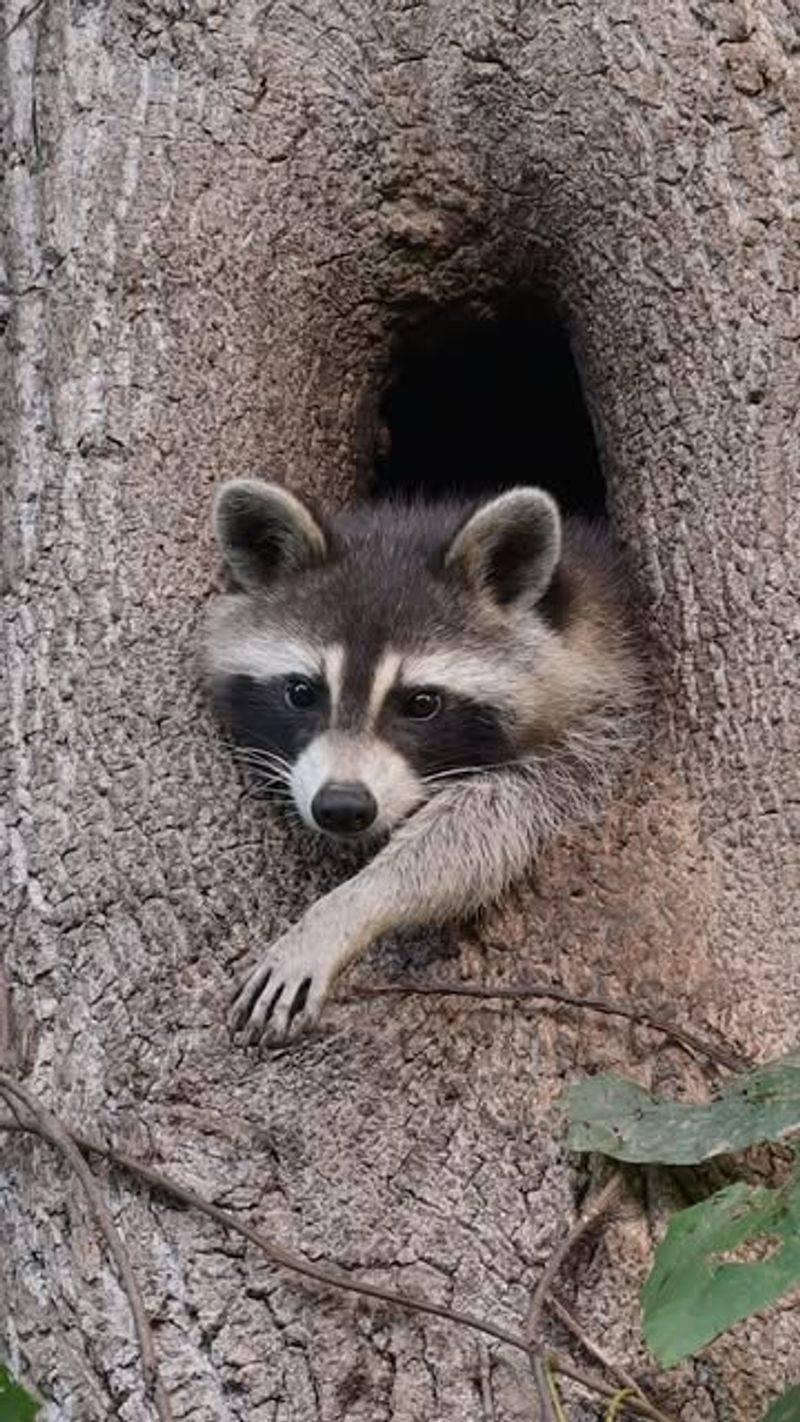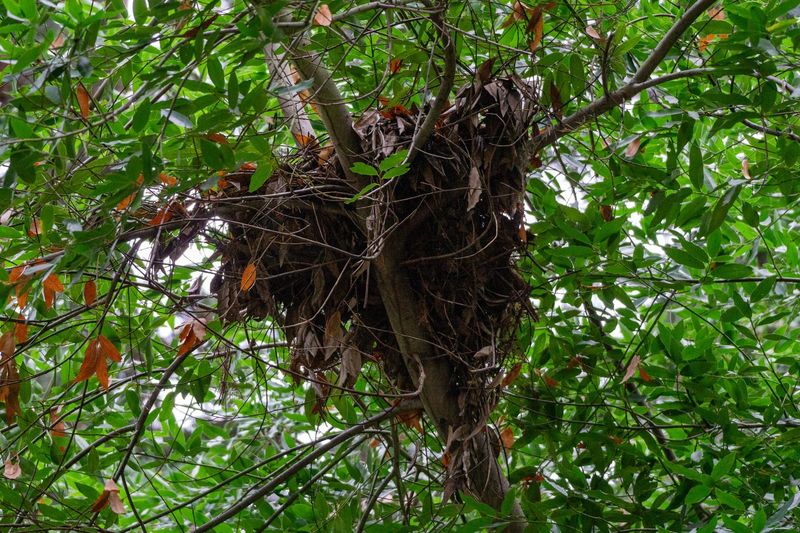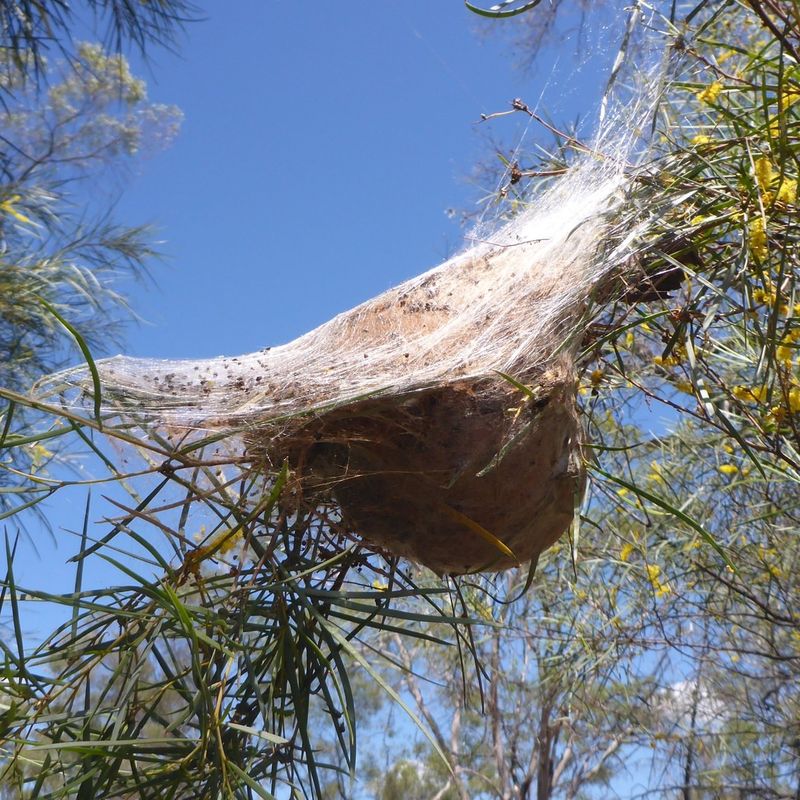Have you ever spotted a big clump of leaves high up in a Texas tree and assumed it was a bird nest? You might want to look again! Those leafy bundles could actually be home to some clever critters that build surprisingly cozy shelters.
Understanding what’s really living in your backyard trees can help you appreciate the amazing wildlife all around you.
1. Squirrel Dreys Are Common Tree Structures
Squirrels build impressive homes called dreys that look just like messy leaf piles from the ground. These round structures are actually carefully woven together using leaves, twigs, and moss.
Inside, squirrels create a snug chamber lined with soft materials like bark strips and grass. They build these homes about 20 to 40 feet high in tree branches for safety from predators.
Most dreys have multiple entry points so squirrels can escape quickly if danger approaches their cozy shelter.
2. Fox Squirrels Prefer Larger Leaf Bundles
Fox squirrels are bigger than their gray cousins, so they naturally build much larger dreys to accommodate their size. You’ll often find their nests in oak and pecan trees throughout Texas neighborhoods.
These rusty-colored squirrels gather massive amounts of leaves during fall months when building materials are plentiful. Their nests can measure up to two feet across, making them really stand out against bare winter branches.
Watch for fox squirrels carrying mouthfuls of leaves upward during construction season from late summer through early winter.
3. Flying Squirrels Create Hidden Nighttime Homes
Southern flying squirrels live throughout East Texas but remain mostly invisible since they’re nocturnal creatures. Their leaf nests often sit in tree cavities or dense foliage where they stay hidden during daylight hours.
Unlike other squirrels, flying squirrels sometimes share their dreys with family members for warmth and companionship. Their nests tend to be smaller and more compact than typical squirrel homes.
If you hear scratching sounds at night near leaf bundles, flying squirrels might be your mysterious neighbors gliding between trees.
4. Ringtail Cats Sometimes Use Leaf Platforms
Ringtails are small nocturnal mammals that resemble a mix between cats and raccoons with gorgeous striped tails. While they prefer rocky dens, some ringtails will rest on modified leaf platforms in trees during the day.
These adorable creatures are Texas’s official state mammal but remain rarely seen by most people. They occasionally take over abandoned squirrel dreys or create simple leaf beds on sturdy branches.
Spotting a ringtail requires patience and luck since they’re incredibly shy and active only after sunset falls across the landscape.
5. Raccoons Modify Existing Tree Nests
Raccoons are opportunistic animals that love reusing old squirrel dreys instead of building from scratch. They’ll expand these leaf structures, adding more materials to create roomier living spaces for their families.
Mother raccoons especially seek out tree nests during spring when they’re raising young kits. The leafy walls provide excellent insulation and protection from weather and predators alike.
You might notice raccoon-modified nests look messier and larger than typical squirrel homes, with leaves scattered below from their clumsy remodeling efforts.
6. Opossum Mothers Use Temporary Leaf Shelters
Virginia opossums don’t build permanent homes but will temporarily use leaf piles in trees for daytime resting spots. Mother opossums carrying babies on their backs especially appreciate these ready-made resting places during their travels.
These marsupials prefer ground-level dens but will climb trees to escape danger or find food. When they do venture upward, abandoned leaf nests make convenient temporary shelters.
Opossums rarely stay in one tree nest for long, moving frequently to new locations throughout their territory each night.
7. Identifying What Lives Inside Your Tree
Determining which creature built that mysterious leaf ball requires careful observation without disturbing the residents. Look for clues like scattered nut shells below for squirrels or muddy paw prints on bark for raccoons.
Timing matters too since squirrels are active during daytime while raccoons and opossums emerge after dark. Watching quietly from a distance during dawn or dusk often reveals the nest’s true occupants.
Never attempt to poke or dismantle these structures since many Texas wildlife species are protected and deserve safe, undisturbed homes in your trees.

